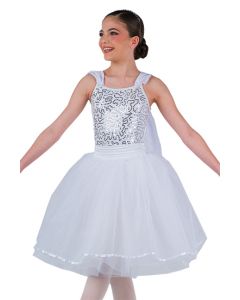Introduction
Dance is more than coordinated steps — it’s a living form of art that speaks through movement, emotion, and energy. But behind every memorable performance lies an often-overlooked element that completes the story: the dance costume.
A well-designed costume is more than just attire; it’s a tool of expression. It enhances every twist, spin, and leap while helping dancers connect with their audience visually and emotionally. Whether it’s a sparkling ballroom gown, a traditional folk outfit, or a sleek contemporary leotard, the right costume has the power to turn movement into magic.
In this article, we’ll dive deep into the world of dance costumes, exploring their evolution, importance, and how to choose the perfect one for your next performance.
What Exactly Are Dance Costumes?
Dance costumes are specialized outfits created for stage performances, recitals, or competitions. Unlike everyday clothing, they are designed to emphasize motion, highlight rhythm, and bring choreography to life. These costumes are often tailored from materials such as spandex, chiffon, or lycra — fabrics that allow flexibility, breathability, and durability.
But their purpose goes far beyond aesthetics. A dance costume:
-
Defines the theme or story of the performance.
-
Allows unrestricted movement for complex routines.
-
Creates visual harmony between dancers and lighting effects.
-
Strengthens the emotional connection with the audience.
In short, a dance costume turns a dancer into a storyteller.
A Glimpse into the History of Dance Costumes
The roots of dance costumes stretch back thousands of years. Ancient civilizations like Egypt, Greece, and India used dance as a form of storytelling, and costumes were designed to reflect gods, myths, and traditions. Dancers often adorned themselves with jewelry, flowing garments, and natural materials that mirrored their culture and beliefs.
The Renaissance and Ballet’s Beginnings
The modern concept of dance costuming began in the Renaissance period, particularly with ballet’s rise in European courts. Early ballet costumes were grand and ornamental — think heavy fabrics, corsets, and jewels. Although visually stunning, they restricted movement.
By the 19th century, costuming shifted toward function and freedom. The famous ballerina Marie Taglioni popularized the romantic tutu — a lighter, airy design that allowed dancers to move gracefully across the stage. Since then, ballet costumes have continued to evolve, blending elegance with movement.
The Modern Revolution
The 20th century brought radical change. With the advent of modern dance, costumes became simpler and more expressive. Dancers like Martha Graham favored minimalism, using fabrics that clung to the body to highlight natural motion. Today, the design of dance costumes combines artistry, technology, and comfort in a way that serves both tradition and innovation.
Different Types of Dance Costumes
Each dance genre carries its own rhythm and personality — and its costumes reflect that identity. Let’s explore how styles differ across popular forms:
1. Ballet Costumes
Ballet costumes are synonymous with elegance and tradition. They typically include:
-
Classical tutus – stiff, structured skirts that highlight precise legwork.
-
Romantic tutus – longer, softer, and more ethereal for expressive roles.
-
Leotards and tights – commonly used for rehearsals and modern ballet.
Ballet attire focuses on clean lines, graceful shapes, and timeless beauty.
2. Jazz Costumes
Jazz dance thrives on energy and attitude, so its costumes reflect that vibrancy. Sequins, metallics, and fringe are common, creating sparkle with every move. Stretch fabrics and bold colors make jazz costumes fun, flexible, and visually striking.
3. Hip-Hop Costumes
Hip-hop fashion embraces individuality and comfort. Dancers often mix oversized shirts, joggers, sneakers, and caps to represent urban street style. The focus is on personality, rhythm, and confidence — every outfit is a statement of self-expression.
4. Ballroom Dance Costumes
Ballroom costumes are the definition of sophistication.
-
For women: flowing gowns adorned with crystals, feathers, or lace.
-
For men: sleek shirts, tuxedos, or tailored vests.
The costumes are designed to flow with movement, creating visual drama and elegance during spins and lifts.
5. Contemporary and Modern Dance Costumes
In contemporary dance, costumes are minimal yet deeply expressive. They’re often crafted in earthy tones or soft fabrics that complement natural motion. The goal is to let the dancer’s body — not the costume — tell the story.
6. Cultural and Folk Costumes
Traditional dance costumes reflect the soul of a community. From the vibrant sarees of Indian classical dance to the rhythmic ruffles of Flamenco dresses, every design holds symbolic meaning and preserves cultural identity.
Why Dance Costumes Matter
Dance costumes are far more than decorative outfits. They are a bridge between choreography and storytelling. Here’s why they’re essential:
1. They Tell the Story
Colors, fabrics, and accessories communicate emotions that words can’t. A red flamenco dress conveys passion, while a white ballet tutu may symbolize purity or innocence.
2. They Empower Dancers
When performers feel comfortable and confident in what they’re wearing, their energy naturally translates to the stage. A perfect-fitting costume boosts self-esteem and performance quality.
3. They Create Unity
In group performances, matching costumes create cohesion. The audience sees the team as one unit, synchronized not just in movement but in visual harmony.
4. They Capture Attention
The shimmer of sequins or the sway of chiffon can captivate an audience instantly. Lighting, color, and costume work together to create a mesmerizing stage presence.
5. They Support Technical Performance
A good costume moves seamlessly with the body. It doesn’t hinder; it enhances. Designers often test how fabric reacts to jumps, turns, and stretches to ensure comfort and mobility.
How to Choose the Right Dance Costume
Selecting the ideal costume requires a balance of creativity and practicality. Here are five key tips for dancers and choreographers:
1. Understand the Theme
Every performance has a story. Choose fabrics, patterns, and colors that align with the music and mood. A lyrical piece may call for soft pastels, while a jazz routine might pop with bold hues.
2. Prioritize Comfort
The best costume feels like a second skin. Avoid materials that itch or restrict movement. Opt for stretchable, breathable fabrics that let dancers move freely.
3. Pay Attention to Fit
Ill-fitting costumes can distract performers. Custom tailoring ensures the costume stays in place through every twist and jump.
4. Use Color Strategically
Colors evoke emotion. Cool tones like blue suggest calm or sadness, while warm tones like red and gold project energy and passion. Choose shades that complement both the choreography and stage lighting.
5. Add Accessories Wisely
Headpieces, gloves, or jewelry can elevate a costume—but overdoing it can overwhelm the performance. Accessories should enhance the story, not steal the spotlight.
The Future of Dance Costumes: Technology Meets Art
Innovation is reshaping how dance costumes are made. Designers now experiment with LED lighting, smart fabrics, and 3D printing to create futuristic looks. Imagine costumes that glow in sync with music or change color as dancers move — it’s already happening in professional productions!
Sustainability is another growing focus. Eco-friendly fabrics made from bamboo fibers, recycled materials, or plant-based dyes are gaining popularity. The modern dance costume isn’t just beautiful; it’s responsible.
Caring for Your Dance Costumes
To keep costumes performance-ready, proper maintenance is crucial:
-
Wash gently by hand using mild detergent.
-
Air dry to prevent damage to elastic fibers.
-
Store flat or on padded hangers to maintain shape.
-
Avoid direct ironing; use a steamer for delicate fabrics.
A little care goes a long way in preserving both quality and sparkle.
Where to Find Quality Dance Costumes
Finding the perfect dance costume is easier than ever. Professional designers and studios like Layla’s Dance specialize in high-quality, performance-ready outfits for ballet, jazz, hip-hop, and more. Their pieces blend comfort, craftsmanship, and creativity—helping dancers of all ages look and feel their best on stage.
Conclusion
Dance costumes are where artistry meets craftsmanship. They transform rhythm into color, emotion into fabric, and motion into memory. From ancient rituals to modern stages, costumes have always been a silent partner in performance — amplifying beauty, energy, and expression.
The next time you perform, remember: your dance costume isn’t just clothing. It’s your story, your identity, and your connection to every heartbeat in the audience.


